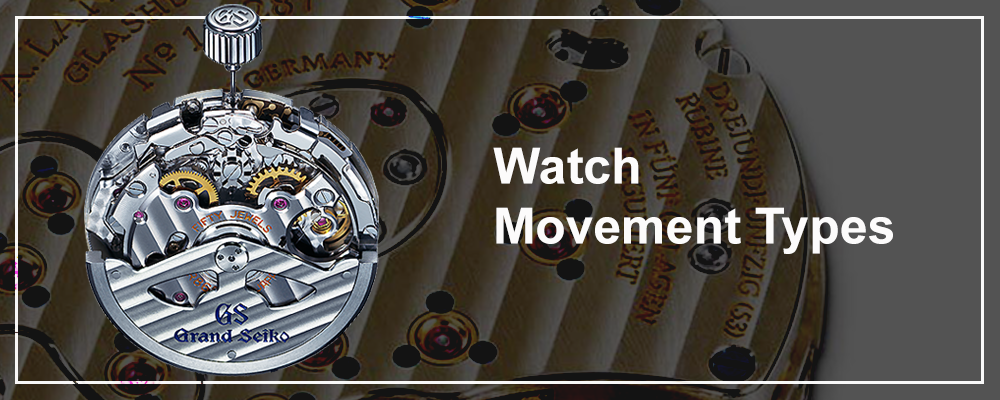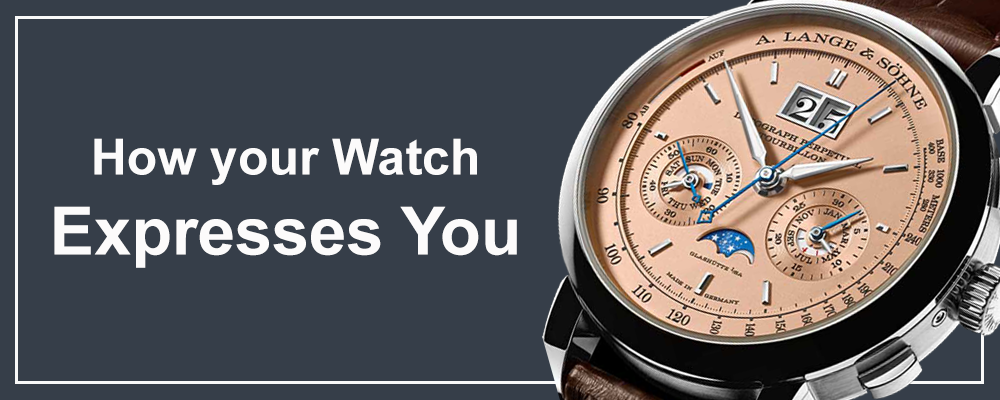There are many different complications to watches. A complication is an additional function to the watch other than the time. But these complications are all powered by different kinds of mechanisms/engines. We’ll have a look at them here and compare.
Quartz: A quartz movement works with a battery, the battery sends electricity to the quartz crystal through an electronic circuit. The quartz crystal oscillates (vibrates back and forth) at a precise frequency: exactly 32768 times per second. The circuit counts the number of vibrations and uses them to generate regular electric pulses, one per second. These pulses power a small electric motor (a tiny stepping motor), turning wheels that spin the watch’s second, minute, and hour hands. The hands of the quartz movement ticks once each second, which is what makes it easy to tell it from the mechanical counterparts.
Mechanical: A mechanical watch works with a mainspring that is hand-wound. The force of the mainspring is transmitted through a series of gears to power the balance wheel, a weighted wheel which oscillates back and forth at a constant rate. Then the escapement releases the watch’s wheels to move forward a small amount with each swing of the balance wheel, moving the watch’s hands forward at a constant rate. This makes the ‘ticking’ sound characteristic of all mechanical watches. The hands of the mechanical movement gitter and ticks in a fast motion that is barely noticeable unless you really focus on it. Otherwise, it looks smooth. In some cases, you may see a mechanical watch ticking like a quartz one, that’s because of a complication called “the dead beat”.
Automatic: Automatic watch movements work exactly like mechanical watches. Except for the fact that the mainspring gets wound by the movement of a rotor placed on or near the mainspring. The hands of the automatic movement gitter and ticks in a fast motion that is barely noticeable unless you really focus on it. Otherwise, it looks smooth. In some cases, you may see an automatic watch ticking like a quartz one, that’s because of a complication called “the dead beat”.
Spring drive: The spring drive movement which is developed and invented by Seiko Epson, is powered by a mainspring and uses an automatic winder along with a hand winding function that can be done from the crown. However, unlike the mechanical movement, the spring drive replaced the escapement with a device that Seiko calls “Tri-syncho regulator” to regulate the unwinding of the mainspring. The regulator controls three forms of energy: the mechanical power of the mainspring, the electrical energy from the mechanical power, and the electromagnetic energy that governs the rotation of the glide wheel. The energy from the glide wheel is used to power a control circuit and quartz crystal oscillator, which regulates the electro-mechanical braking of the glide wheel. The spring drive hands glide smoothly instead of causing a gitter like the mechanical movements, nor a tick like the quartz ones.
Watches are truly interesting whether we like to admit it or not. I personally believe that the more complicated things get, the more we get attached to it. Did you know these different mechanisms before?





